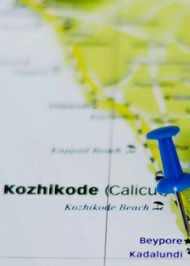Why ‘The arts’ should be a mandatory subject in schools and what should be taught in it
TOI Lifestyle Desk | ETimes.in | Last updated on - Jun 28, 2024, 18:30 ISTShare fbsharetwsharepinshareComments (0)
01/8The importance of arts

The arts subject is usually shrugged away as something that is only for the ‘weak students’. The people who are thought to be not analytical enough are thrown into the extra subjects with or without their will.
But, as a society, what we fail to understand is the sheer brilliance of the subject and how important it is. Be it the simple brushstrokes on the canvas or the high-pitch that is required in some ragas, ‘arts’ is not just a subject to fall back on, but one that can shape a student’s career, interest, and life.
02/8Why and how does it help?


In the centre of a good art education, or subject, is the fact that it encourages creativity. It encourages students to do and try out something new. Arts does not just help people be more creative, it also helps them express themselves, create something new, and innovate.
When students engage in the arts, they learn to express themselves, and communicate their thoughts and emotions more clearly. This helps them think outside the box and approach challenges from various angles.
Creative expression through the arts helps them build confidence and resilience. They learn to take risks and understand that mistakes are part of the learning process.
Here are a few ways in which students can be taught art education.
03/8Poetry


To quote ‘Dead Poets Society’, “We don't read and write poetry because it's cute. We read and write poetry because we are members of the human race. And the human race is filled with passion. And medicine, law, business, engineering, these are noble pursuits and necessary to sustain life. But poetry, beauty, romance, love, these are what we stay alive for.”
Poetry, with its rich language and imagery, is a powerful way to develop a sense of eloquence. Writing and analysing poetry encourages students to play with language, and appreciate its beauty.
Plus, poetry allows students to express complex emotions and ideas in a concise form. It teaches them to convey their thoughts with precision, and with a sense of love.
04/8Drama and theatre


Drama and theatre are one of the best art forms to help students better their communication skills. Participating in drama activities requires students to step into different characters and perspectives, which helps them understand and empathise with others.
Theatre also improves public speaking and presentation skills. Children can learn to project their voices, think more clearly, and present themselves confidently in front of an audience.
05/8Mime


Mime, the art of expressing emotions and saying things without using any words. Mime can easily be called one of the most interesting but also the most difficult skills or art to learn. But, with the difficulty comes the power of non-verbal communication and displaying the right body language. Through mime, students learn to tell stories and narrate incidents without using their speech, and through gestures, facial expressions, and movements.
A mime performance helps increase creativity and imagination and children have to think about ways to send their point across the room without using words.
06/8Dance


One of the most energetic and free-ing forms of art is dance. It is quick, artistic, elegant, and at times, extremely energetic. In fact, dance isn't just fun and lively for the one who does it, but also for the one who is viewing it as the audience. And apart from creativity, dance also helps better physical fitness, hand-eye coordination, and discipline. Through dance, students learn to connect with their bodies, understand rhythm and timing, and express their emotions through gestures and movement.
07/8Paintings


One of the most beautiful forms of art education is painting. Painting, as a subject, helps students learn about the elements of arts, the different techniques, the eras in which painting flourished as an art form, and so much more.
Plus, painting is such a therapeutic activity! To stand near a basket of fruits and sketch every fruit and the shadow it creates, is simply magical. The painting process needs children to be focused and patient with their work which helps them develop this side of their personality as well.
08/8Instrumentals


An underrated art form and subject is playing the instruments. But, the underrated nature also comes with a difficult learning curve. Instruments are not free-form and require years and years of practice to be good at. Learning and playing an instrument requires discipline, practice, and dedication.
Be it the strings of the guitar or the ‘thaap’ of the tabla, the right tunes and depth takes years to practise and master. But, instruments also help children channel their emotions. Be it the sad melodies on a Sitar or an energetic outburst of melodies on a flute, instrumental education can sure take a kid a long way.































































closecomments
SIGN IN WITH
GoogleEmail